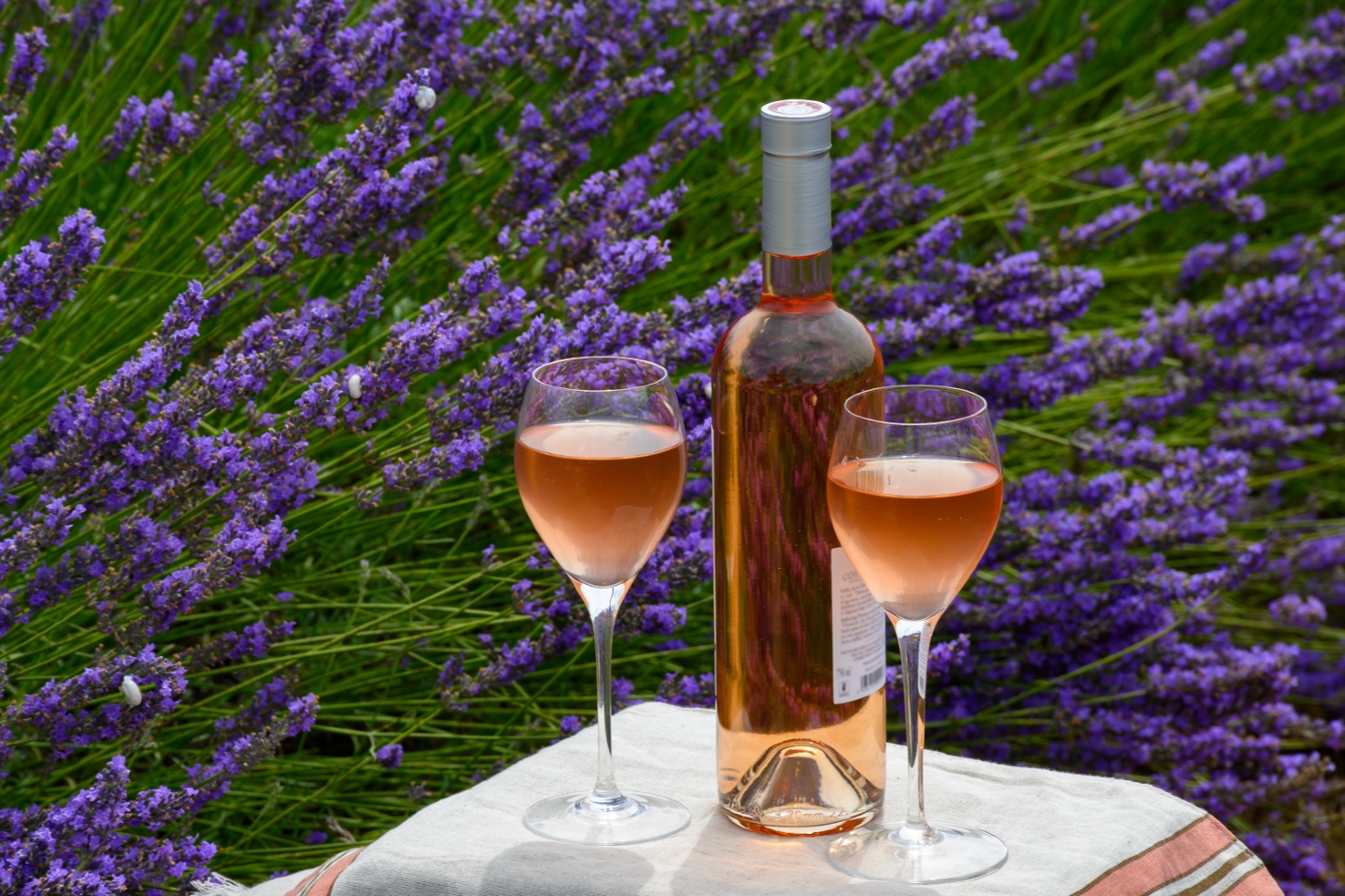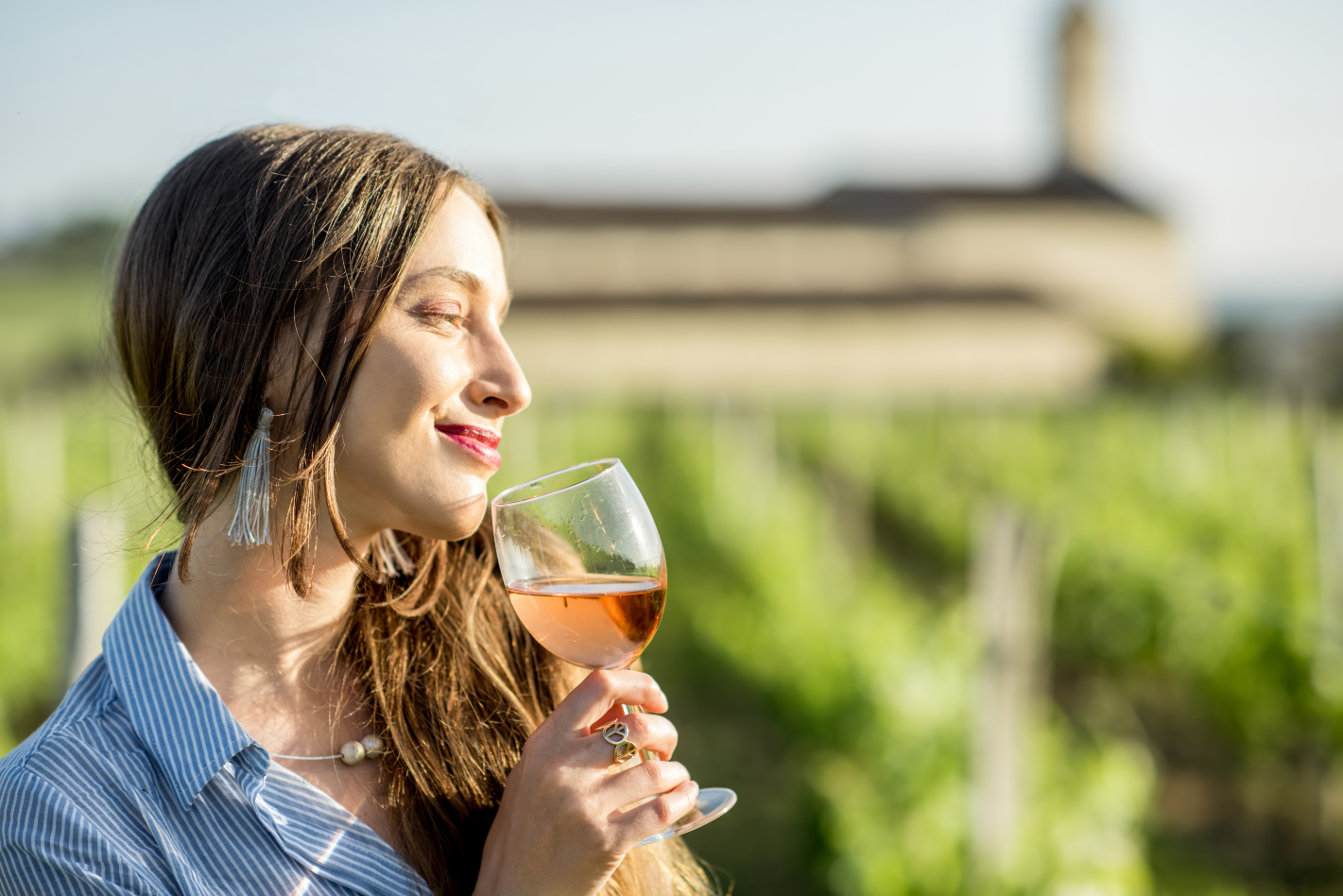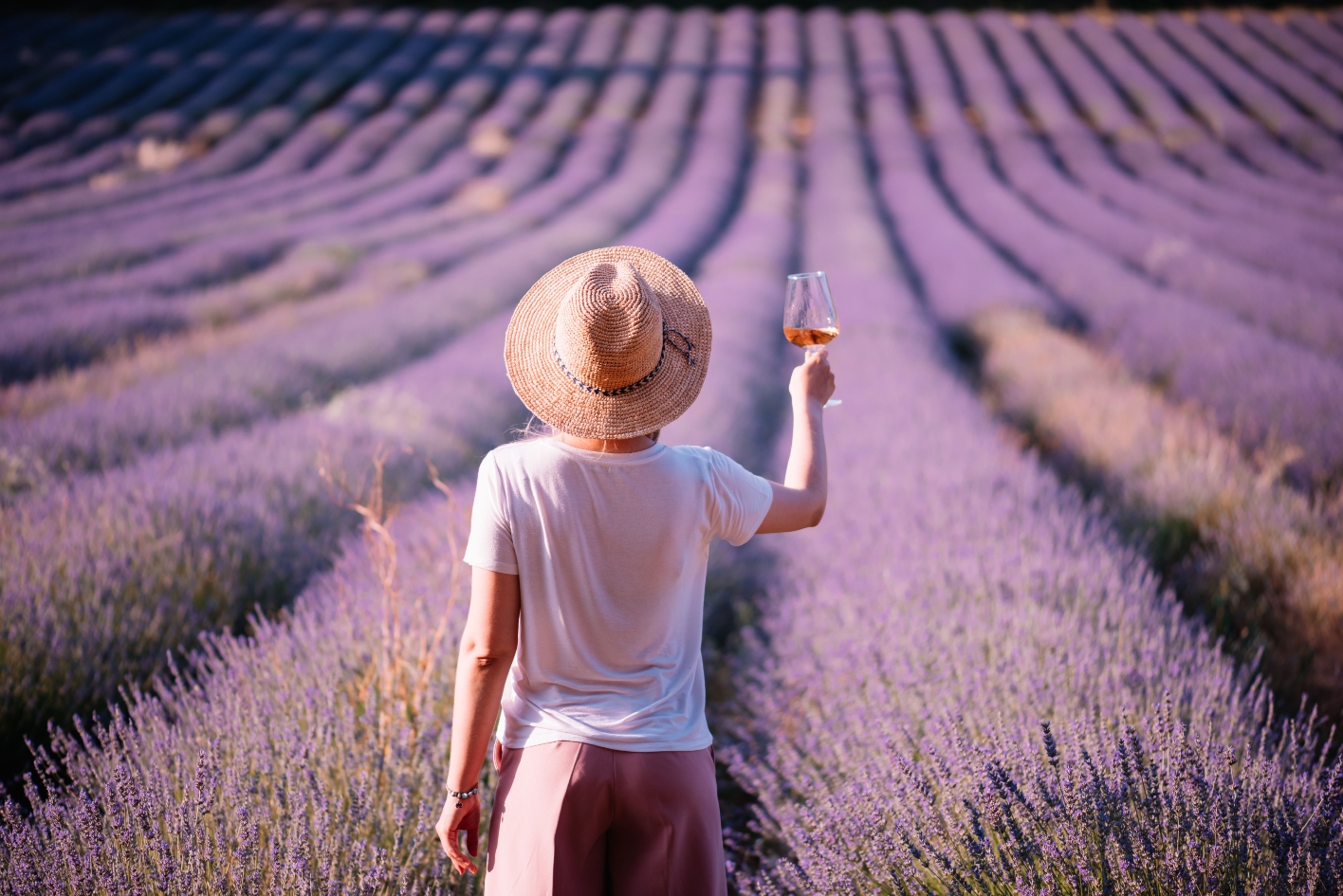Text: Nguyen Bui

In summer’s quiet light, there is a wine that speaks in tone rather than volume — soft, pale, and full of ease. French rosé is more than a drink; it is a mood, a gesture, a pause between sunlight and stone. From the shimmering finesse of Provence to the depth of Bandol, from Bordeaux’s quiet confidence to the Loire’s floral freshness, each region lends a distinct voice. This is a journey through six places where rosé is not simply crafted but refined to its most graceful form.
Provence
The Standard of Summer Elegance
No region defines the identity of rosé quite like Provence. With its sun-drenched vineyards, limestone soils, and winds from the sea, Provence produces wines that are pale, dry, and achingly elegant. Grenache, Cinsault, Syrah, and Mourvèdre often appear together in the blend, with a hint of Rolle (Vermentino), shaping wines that echo notes of stone fruit, citrus peel, wild herbs, and wet-stone minerality. This is the home of Côtes de Provence, Coteaux d’Aix-en-Provence, and Coteaux Varois – names that have become shorthand for effortless charm in a glass. Served alongside grilled fish, bouillabaisse, or simply during a long afternoon with nothing urgent to do, a Provençal rosé is the quintessential ambassador of la douceur de vivre.
Bandol
Where Rosé Meets Structure
South of Provence lies Bandol, a coastal appellation known for intensity and longevity. Here, rosé is not a fleeting summer indulgence but a serious wine. Often led by Mourvèdre and layered with Syrah and Grenache, it shows greater structure and depth than its Provençal cousins. Bandol rosés unfold with notes of blood orange, ripe cherry, dried thyme, and sea salt. Their savory edge and firm tannins make them a natural match for roasted duck, lamb tagine, or even aged cheeses. These are wines not only for warm afternoons, but for contemplative summer evenings.

Rhône Valley
Tavel and the Rosé with a Voice
In Tavel, rosé is no afterthought but it is the main act. This small, prestigious appellation in the southern Rhône is devoted exclusively to rosé, producing wines that are deep pink, almost
ruby, full-bodied and expressive. Grenache, Syrah, Cinsault, and Mourvèdre contribute layers of cherry, raspberry compote, spice, and dried herbs. Often made via the saignée method, these wines carry impressive concentration and complexity. A bottle of Tavel demands both food and attention. Try it with grilled sausages, ratatouille, or anything Provençal that sings of olive oil and garlic.
Languedoc
Creative, Approachable, and Joyful
In Languedoc-Roussillon, winemakers work with an open palette of grapes: Grenache, Carignan, Syrah, even Cabernet Franc and Mourvèdre. These rosés are generous in personality and
often highly affordable. Expect aromas of watermelon, crushed strawberries, fresh herbs, and a saline edge. They are made for picnics, poolside lunches, or platters of grilled vegetables and seafood shared among friends. This is wine for easy living, without sacrificing character.
Bordeaux
Rosé with a Red Wine Soul
Though renowned for its grand reds and elegant whites, Bordeaux also produces compelling rosés. Made from Merlot, Cabernet Sauvignon, and Cabernet Franc, these wines are dry and
structured, with a whisper of green herbs and crushed graphite. Bordeaux rosé wears restraint well. Its subtle fruit character and firm acidity make it an ideal companion to charcuterie, roast chicken, or shellfish pasta. If Provençal rosé is light silk, Bordeaux rosé is fine linen: cool, composed, and timeless.

Loire Valley
Freshness in Bloom
With its cool climate and northern latitude, the Loire Valley brings levity to rosé. Appellations like Rosé de Loire, Rosé d’Anjou, and Cabernet d’Anjou employ grapes such as Grolleau, Cabernet
Franc, and Gamay to create wines that are delicate, floral, and bright with acidity. These are garden-party wines, perfect with chèvre frais, roasted beets, or citrus-dressed salads. With their graceful bouquet of roses, white peach, and cranberry, Loire rosés are made for spring and all things fresh.
Rhône Valley
Tavel and the Rosé with a Voice
In Tavel, rosé is no afterthought but it is the main act. This small, prestigious appellation in the southern Rhône is devoted exclusively to rosé, producing wines that are deep pink, almost
ruby, full-bodied and expressive. Grenache, Syrah, Cinsault, and Mourvèdre contribute layers of cherry, raspberry compote, spice, and dried herbs. Often made via the saignée method, these wines carry impressive concentration and complexity. A bottle of Tavel demands both food and attention. Try it with grilled sausages, ratatouille, or anything Provençal that sings of olive oil and garlic.
Languedoc
Creative, Approachable, and Joyful
In Languedoc-Roussillon, winemakers work with an open palette of grapes: Grenache, Carignan, Syrah, even Cabernet Franc and Mourvèdre. These rosés are generous in personality and
often highly affordable. Expect aromas of watermelon, crushed strawberries, fresh herbs, and a saline edge. They are made for picnics, poolside lunches, or platters of grilled vegetables and seafood shared among friends. This is wine for easy living, without sacrificing character.
